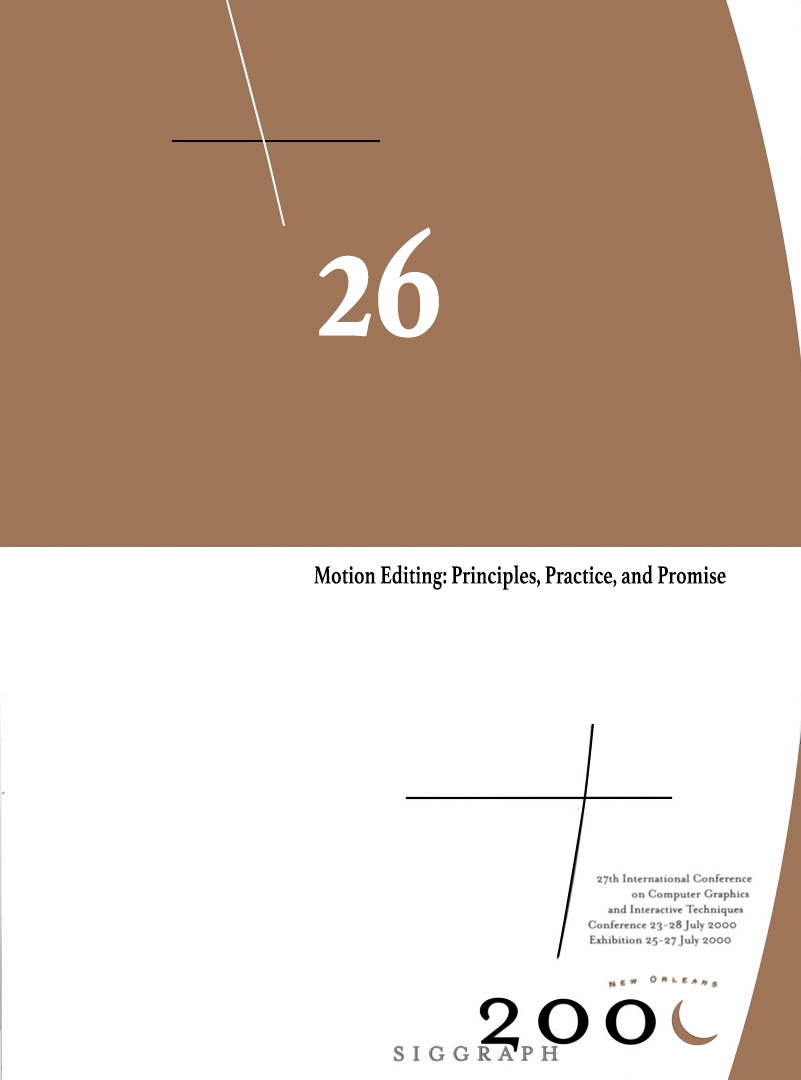“Motion Editing: Principles, Practice, and Promise” by Gleicher, Grassia, Popovic, Rosenthal and Thingvold
Conference:
Type(s):
Entry Number: 26
Title:
- Motion Editing: Principles, Practice, and Promise
Organizer(s):
Presenter(s)/Author(s):
Abstract:
Prerequisites
A working knowledge of computer animation programming, graphics concepts, and mathematics, such as matrix-vector manipulations, linear algebra and cubic splines. Additionally, basic calculus and signal processing are useful in some portions of this course.
Topics
Mathematical foundations of motion editing: representation of rotation and poses, forward and inverse kinematics, interpolation, signal processing, and optimization. Application of basic techniques to motion editing problems. Design and construction of motion optimization methods. Survey of current tools and research efforts.
Description
There are many excellent tools for creating animations, but they often don’t provide the desired result, because production needs change (or weren’t predicted) or the creation tools fail. This course surveyed recent technologies for motion editing, a technique that allows existing motions to be changed to meet new needs. Speakers reviewed animation mathematics as a common vocabulary for discussing editing techniques, how these mathematical tools are applied to motion editing problems, some recent motion editing technologies, the relationship among various tools, and how they can be integrated.





